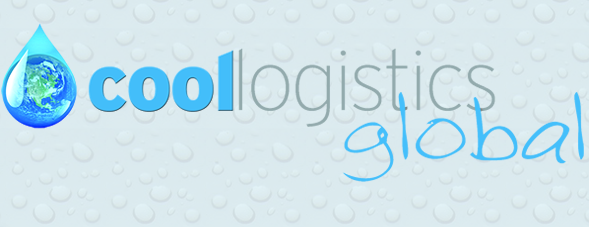How to tackle the risks in perishables transport
Produce quality more important than carriage factors for good shelf-life.
Cooling and carriage factors clearly are not the only aspects that can lead to waste. The weather during cultivation, crop husbandry, grade at harvest, post-harvest handling, the type of packaging and pre-cooling all play their own role in the quality and storability of the product. As Alex Schenz put it at the 6th Cool Logistics Conference, “The container is not a hospital, if you put garbage in, you get garbage out.”
Yet in terms of carriage factors, there are many aspects to control. Humidity management can prevent mold or wet cartons, as Leo Lukasse, a climate control specialist from Wageningen University, highlighted at the conference.
Another point of concern are periods without power during transportation. German expert in ocean transport and reefer containers Yves Wild said power-off periods seem to be increasing because operations take more time due to reefers getting larger and larger. A connected reefer would be able to supply real-time information on the situation, thus reducing cargo loss and costs.
Michael Dempsey, sales and marketing vice president at WAM Technologies in the US, said such technology already exists but various parties throughout the chain are reluctant to invest in it as they would not be the only party to benefit and it still is unclear who would own the data collected. Yet a lot is to be gained from connectivity – visibility, monitoring, compliance and security – which would lead to a return on investment.
Reefer container trade: bright spots and financial challenges
Although it seems clear that the reefer containers are definitively taking the lead over conventional reefer shipping where perishable transportation is concerned, that does not mean the industry is not facing challenges.
As Thomas Eskesen, global head of refrigerated business with Maersk Line, showed during his presentation at the conference, carrier results have not been sustainable for a long time. They dropped below the level of generally accepted margins since the beginning of 2011 and have remained there ever since, even dipping into the negative figures for prolonged periods.
This has left the industry with serious financial challenges. At the same time, a compound annual growth rate (cagr) for reefer containers of 6.5% is reported with prospects for further growth. Where the reefer container share was 72.3% in 2013, it is predicted to reach 79.8% in 2018, according to Alexis Michel, CMA CGM’s senior vice president of logistics and reefers. Yet he, too, expressed concerns about profitability versus investment in the reefer container fleet and the need for better operating margins.
Growth in perishables trade
However, according to figures from the Seabury Group, there are bright spots on the horizon, too. A shift in transportation is noticeable, with a move away from air towards ocean trade, particularly in containers. Indeed two thirds of the global perishables’ ocean volume is in containers. In Europe and Africa in particular, there seems to be more room for further growth in containers, the Seabury Group believes. Volume-wise, it is the short distance trade that is the most significant and it is also this that is seeing the fastest growth. A compound annual growth rate (CAGR) of 4.8% is forecast for trade in perishables between 2013-2018. The Asian Pacific region, with an expected CAGR of 6%, is the main driver of growth.
Increased demand for value–services
Both Maersk and CMA-CGM have also observed that reefer customers are demanding increased service. This had lead Maersk to introduce a vast toolbox to both improve service and lower costs. In the toolbox, services such as network rationalisation, speed equalisation and slow steaming, inland optimisation and much more can be found. The end result should be lower network costs, improved products and lower CO2 emissions. What it should not lead to is one single service for all customers. Maersk Line will continue to differentiate when it comes to sales experience, the booking process, service levels and customer service. CMA-CGM observes that the seaborne mode split leads container carriers to higher service level criteria where compensation of longer transit times, the ensuring of fumigation and logistic schemes, such as open sea exchange, are concerned. In all of these processes, data will be a key priority. Indeed, as Maersk points out, data will be the future value driver.
MW
This is an abbreviated version of an article which appeared on p62 of edition 135 of Eurofresh Distribution magazine. Read the full article for free here.


